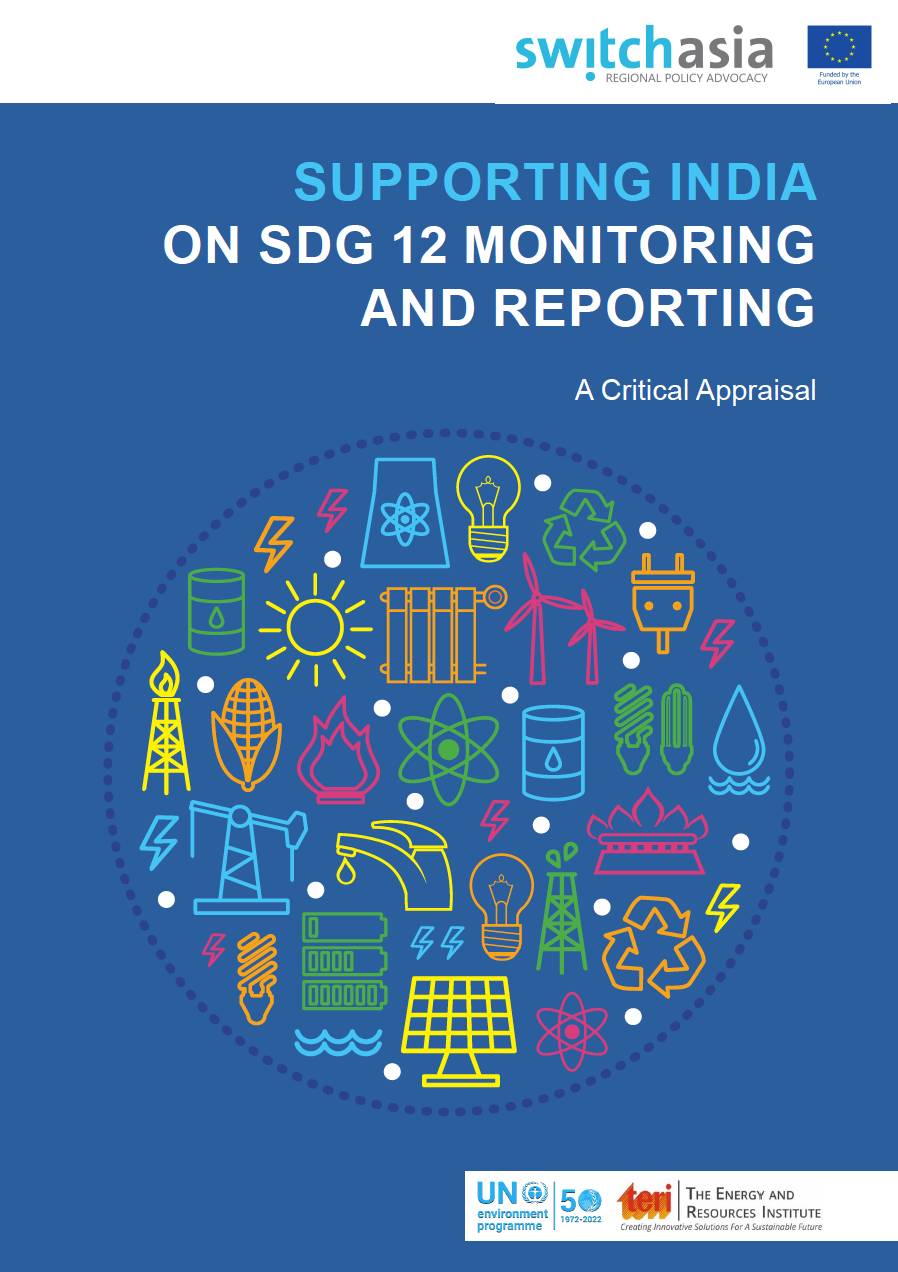
Sustainable consumption and production has been on the global agenda since the World Summit on Sustainable Development, Johannesburg in 2002, and now is one of the seventeen sustainable development goals (SDGs). SDG 12 is on ensuring sustainable consumption and production (SCP) and encourages reduction of wasteful consumption and increase in resource efficiency in production patterns by encouraging governments, businesses and consumers to adopt more sustainable actions.
SWITCH-Asia RPAC has identified the need to facilitate dialogue across the region in SDG 12 reporting. India with 17 per cent of world population is key to global SDG achievement. In this context, the national activity to support India on SDG 12 monitoring and reporting was timely initiated by SWITCH-Asia RPAC in 2019 after discussions with Ministry of Environment Forests and Climate Change (MOEFCC) and Ministry of Statistics and Programme Implementation (MOSPI). The support aimed to promote research, policy dialogue and capacity building in India on Sustainable Consumption and Production (SCP) and Goal 12 of the Sustainable Development Goals (SDGs) with an objective to strengthen the national reporting process on SDG 12 by harmonizing the national indicator framework with the global indicator framework to the extent possible. The report therefore is the key achievement that connected multi-stakeholders in India to share their information, policies and review the progress and relevant indicators for SDG 12 report.
This technical document compiles and systematizes the findings of a review and analysis based on the National Indicator Framework for SDG 12 and makes recommendations for the monitoring and reporting of the different nationally defined indicators while harmonising them with the Global Indicator Framework. Rooted in research and consultative processes, this knowledge product aims to systematize critical appraisal on the National Indicator Framework for SDG 12 to make recommendations for the monitoring and reporting of the different nationally defined indicators while considering aspects such as harmonization with targets, policy cycle, data limitations, and feasibility for sub-national level reporting.


